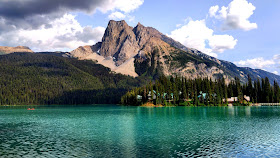Sunday, 18 March 2018
Friday, 16 March 2018
LATE OLIGOCENE SOOKE FORMATION
 |
| Desmostylus, Royal Ontario Museum Collection |
The formation contains marine fossils including a diversity of intertidal and near shore gastropods, bivalves, abundant barnacle (Balanus) plates, and rare coral, echinoid (sand dollar) and mammal (Desmostylus) fossils.
When these fossils were laid down, the Northeastern Pacific had cooled to near modern levels and the taxa that were preserved as fossils bear a strong resemblance to those found living today beneath the Strait of Juan de Fuca. In fact, many of the Sooke Formation genera are still extant.
We find near shore and intertidal genera such as Mytilus (mussels) and barnacles, as well as more typically subtidal predatory globular moon snails, surf clams (Spisula, Macoma), and thin, flattened Tellin clams.
In several places, there are layers thickly strewn with fossils, suggesting that they were being deposited along a strand line. The rock is relatively coarse-grained sandstone, suggesting a high energy environment as would be found near a beach.
The outcrops at Muir Creek make for a great day trip. This is a family friendly site best enjoyed and collected at low tide.
Monday, 12 March 2018
Saturday, 10 March 2018
Sunday, 4 March 2018
Saturday, 3 March 2018
CETACEA: HUMPBACK WHALE
Look at this lovely maternal bond between an adult Humpback whale female, Megaptera novaeangliae, and her young. Humpbacks are a species of baleen whale for whom I hold a special place in my heart.
Baleens are whales who feed on plankton and other wee oceanic tasties that they consume through their baleens, a specialised filter of keratin that frames their mouths.
There are fifteen species of baleen whales. They inhabit all major oceans, in a wide band running from the Antarctic ice edge to 81°N latitude.
In the Kwak̓wala language of the Kwakiutl or Kwakwaka'wakw, speakers of Kwak'wala, of the Pacific Northwest, whales are known as g̱wa̱'ya̱m. Both the California grey and the Humpback whale live on the coast. Only a small number of individuals in First Nation society had the right to harpoon a whale. It was generally only the Chief who was bestowed this great honour. Humpback whales like to feed close to shore and enter the local inlets. Around Vancouver Island and along the coast of British Columbia, this made them a welcome food source as the long days of winter passed into Spring.
Humpback whales are rorquals, members of the Balaenopteridae family that includes the blue, fin, Bryde's, sei and minke whales. The rorquals are believed to have diverged from the other families of the suborder Mysticeti during the middle Miocene.
While cetaceans were historically thought to have descended from mesonychids— which would place them outside the order Artiodactyla— molecular evidence supports them as a clade of even-toed ungulates — our dear Artiodactyla. Baleen whales split from toothed whales, the Odontoceti, around 34 million years ago.




